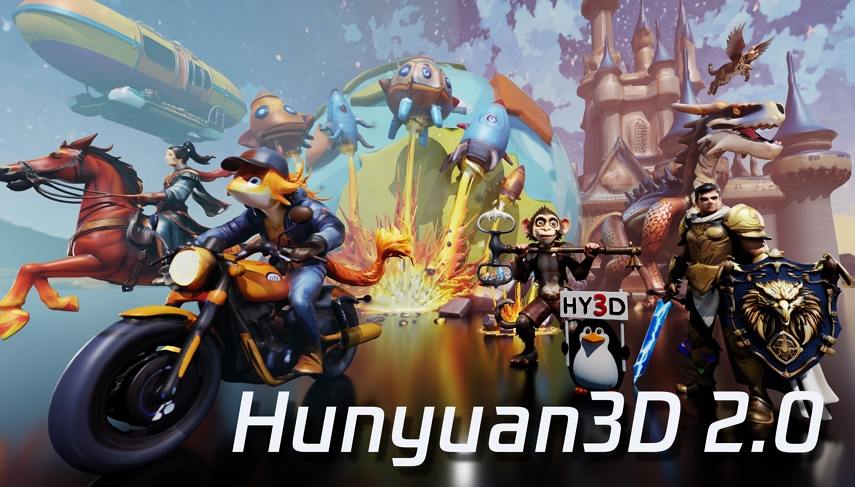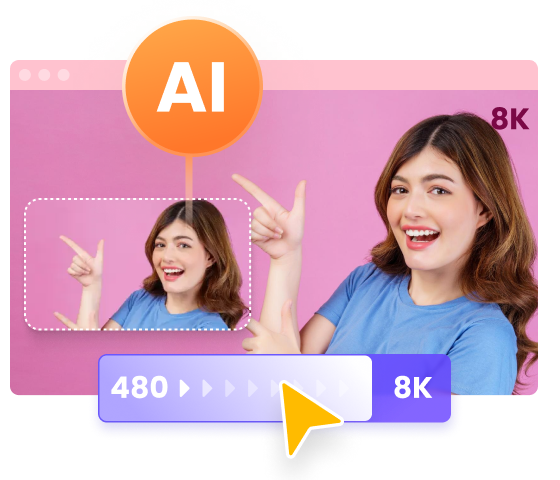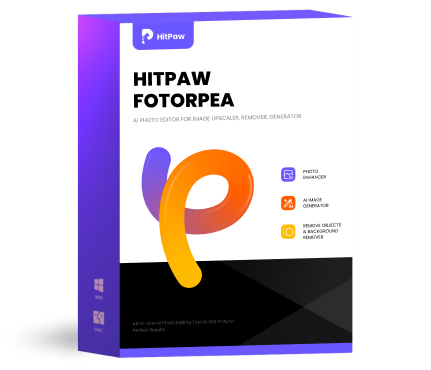Hunyuan 3D: The Open-Source Powerhouse Fueling the 3D AI Revolution
2025 is fast becoming the year of multimodal AI. From text-to-video engines to real-time voice cloning, generative AI is revolutionizing creative workflows across industries. At the center of this surge is Hunyuan 3D, Tencent's advanced AI system that enables fast, high-quality 3D model generation from text or images.
Hunyuan 3D isn't just another lab experiment; it's a full-fledged content creation engine built with creators in mind. With free public access, API integration, and real-time rendering capabilities, it has ignited new possibilities for 3D storytelling, animation, and design. In this blog, we'll explore how Hunyuan 3D works, what makes it special, and how it pairs perfectly with tools like AI video enhancers to elevate content from prototype to perfection.

Part 1: Hunyuan 3D's Breakthroughs in Tech and Architecture
Tencent released Hunyuan 3D v2.0 in early 2025 and quickly followed it up with the v2.5 upgrade in April. Each iteration has brought significant performance improvements:
- Geometry Resolution: From low-poly to 1024-level high-resolution meshes.
- Texture Quality: Support for 4K physically based rendering (PBR) textures, including bump maps and normal maps.
- Generation Time: Turbo and Turbo-mv variants can generate a textured, animation-ready model in as little as 30 seconds.
- Decoupled Architecture: Hunyuan separates shape and texture generation, increasing flexibility and quality.
- Multi-View Training: Models can now render consistent outputs across different angles, reducing visual inconsistencies.
Perhaps most importantly, Tencent released open-source versions of its models along with a public API, allowing developers and companies to integrate Hunyuan 3D into pipelines without steep infrastructure costs.

Part 2: Industry Reactions and Competitive Landscape
Hunyuan 3D's meteoric rise has drawn attention from across the AI and design world. It competes directly with major players like Google DreamFusion, Meta 3DGen, and Luma AI.
But where others focus on visual novelty or research benchmarks, Hunyuan 3D is prized for its production-readiness. With rigging tools, T-pose conversion, and smart mesh simplification, it stands out as a practical tool for developers.
Feedback from the creator community has been overwhelmingly positive:
"The open-source community is going wild with this."
"This is the first 3D gen tool I can see myself using in actual game dev."
Tencent's investment into the ecosystem - including platform-level integration through the Hunyuan 3D Creation Engine - signals that this is more than a research showcase; it's a long-term push to democratize 3D design.
Part 3: Real-World Use Cases and Creator Adoption
Hunyuan 3D is already being used in:
- Indie Game Development: For prototyping characters, props, and environments.
- AR/VR Content Creation: Rapidly generate stylized assets.
- YouTube and Social Video: Create 3D assets for intros, overlays, and visual effects.
- 3D Printing & Education: Model visualization and curriculum design.
The ease of use means even non-technical users can create 3D assets, opening up workflows that once required hours of modeling expertise.
Creators especially love its versatility. A digital artist can type a prompt, generate a sci-fi spaceship, rig it, and export it for animation-all in one flow.

Part 4: From Model to Motion - Enhancing 3D Videos with AI
While Hunyuan 3D shines in model generation, rendering those assets into smooth, realistic videos can still pose challenges. That's where AI video enhancers become essential.
Raw renders often suffer from:
- Jagged edges or aliasing
- Low lighting contrast
- Inconsistent texture sharpness
- Compression noise in final exports
Using an AI Video Enhancer like HitPaw VikPea, creators can upscale low-resolution renders to crisp 4K, balance lighting, reduce visual noise, and enhance fine details - all automatically. This not only improves visual fidelity but also saves hours in manual editing.
This pipeline is ideal for game trailers, marketing videos, virtual characters and influencers, and educational 3D content
Typical workflow:
- Generate a 3D object or scene using Hunyuan 3D.
- Render it in Blender, Unity, or Unreal Engine.
- Import the video into your AI video enhancer.
- Apply auto-upscaling and enhancement filters.
- Export a studio-quality animation.
Conclusion
With open-source models, real-world usability, and creative flexibility, Hunyuan 3D is redefining what's possible with generative AI. It doesn't just stop at modeling-it enables a complete content pipeline.
Pairing Hunyuan 3D with AI-powered tools like HitPaw VikPea video enhancer lets you push your creations even further. Whether you're a designer, educator, influencer, or indie dev, this is your moment to explore the future of creation.








 HitPaw Univd (Video Converter)
HitPaw Univd (Video Converter) HitPaw VoicePea
HitPaw VoicePea  HitPaw FotorPea
HitPaw FotorPea



Share this article:
Select the product rating:
Daniel Walker
Editor-in-Chief
This post was written by Editor Daniel Walker whose passion lies in bridging the gap between cutting-edge technology and everyday creativity. The content he created inspires the audience to embrace digital tools confidently.
View all ArticlesLeave a Comment
Create your review for HitPaw articles